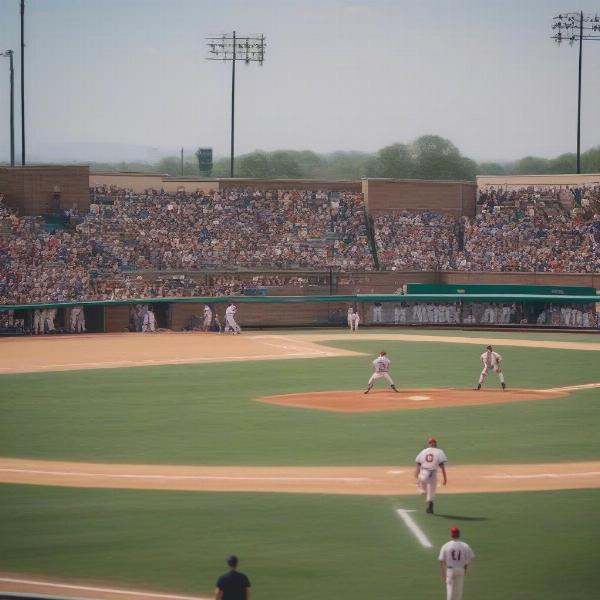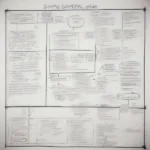A typical college baseball game is nine innings long. However, there are several scenarios that can change the length of a game, impacting how many innings are ultimately played. Understanding these nuances is key to enjoying college baseball to the fullest.
The Standard Nine-Inning Format
The standard nine-inning format is the cornerstone of college baseball. Each team gets nine innings to score more runs than their opponent. Just like in professional baseball, if the score is tied after nine innings, the game goes into extra innings. Each extra inning is played until a winner is determined. This means college baseball games, unlike some other sports, have no time limit and can theoretically continue indefinitely.
Now, while nine innings is the norm, exceptions do exist and it’s important to understand them. Let’s dive into some situations that might shorten or lengthen a game.
Situations Impacting Innings Played
Several factors can affect the number of innings played in a college baseball game. These include:
- Run Rules: Many college leagues implement a run rule, typically invoked when one team is ahead by a certain number of runs after a specific inning. This mercy rule is designed to shorten games that are already essentially decided and save pitching staffs. The specific run differential and inning vary by league but commonly range from 10 runs after seven innings.
- Weather Delays: Rain, lightning, or other inclement weather can significantly impact a game. Short delays might just pause the action, but prolonged delays can lead to suspended or even canceled games. If a game is suspended, it’s usually resumed at a later date from the point of suspension, regardless of how many innings have been completed.
- Doubleheaders: College baseball often features doubleheaders, where two games are played on the same day. To conserve time and resources, these games can sometimes be scheduled for fewer than nine innings, typically seven. This is especially common mid-week or during tournaments.
- Conference Tournament Regulations: Conference tournaments can have unique rules regarding game length, especially in later rounds. These might include playing full nine-inning games throughout or switching to a predetermined number of innings for certain games.
- Tiebreakers: In the event of a tie at the end of a regular season, some conferences might utilize tiebreaker games to determine seeding or playoff qualification. These tiebreaker games could also be subject to different inning rules than standard regular season games.
 College baseball game lasting nine innings
College baseball game lasting nine innings
What Happens if a Game is Tied After Nine Innings?
As previously mentioned, if the score remains tied after the regulation nine innings, the game continues into extra innings. Teams continue to bat and pitch until one team holds a lead at the end of an inning. This can lead to some dramatically long and exciting games, showcasing the resilience and determination of the players.
Understanding Extra Innings in College Baseball
Extra innings in college baseball function similarly to professional baseball. Teams continue to play complete innings until a winner emerges. There are no tiebreakers employed like in some other sports. Each extra inning provides another opportunity for both teams to score, creating tension and excitement for players and fans alike.
 College baseball game going into extra innings
College baseball game going into extra innings
Why is the Nine-Inning Format Standard?
The nine-inning format has become standard in baseball due to its historical development and its proven effectiveness in providing a balanced and fair contest. While shorter games might seem appealing for logistical reasons, nine innings allow for more strategic depth and opportunities for both teams to showcase their skills and overcome adversity.
Differences Between College and Professional Baseball Game Lengths
While both college and professional baseball generally follow the nine-inning format, there are some key differences. Doubleheaders in college baseball, as noted earlier, are often seven innings, which is less common in the professional leagues. The run rule is also more prevalent and has different parameters in college baseball compared to professional baseball.
Strategies in Shorter and Longer College Baseball Games
The length of a game can significantly impact coaching strategies. In shorter games, such as seven-inning doubleheaders, managers might be more aggressive with their pitching changes and pinch-hitting decisions. Conversely, in longer games, including those going into extra innings, managing pitching staffs and conserving player energy becomes crucial.
 College baseball coach discussing strategies with players
College baseball coach discussing strategies with players
FAQs:
-
Are all college baseball games nine innings? Most are, but exceptions exist due to run rules, weather, doubleheaders, and tournament regulations.
-
How long can a college baseball game last? Theoretically, there’s no time limit, especially in extra innings.
-
What’s the mercy rule in college baseball? This varies by league, but it often involves a large run differential after a certain inning, typically 10 runs after seven innings.
-
Are college baseball doubleheaders always shorter? They are often scheduled for seven innings each to conserve time.
-
What happens in extra innings in college baseball? Teams play complete innings until one team has the lead at the end of an inning.
-
How does game length affect strategy in college baseball? Shorter games often lead to more aggressive coaching decisions, while longer games require more careful resource management.
-
Where can I find specific rules for college baseball game lengths? Refer to the rulebook of the specific conference or league governing the game.
Conclusion
While nine innings is the standard length of a college baseball game, understanding the various factors that can alter this, such as run rules, weather delays, and doubleheader regulations, is crucial for any fan or player. These factors not only influence the final score but also shape the strategies employed by the coaching staff. Knowing How Many Innings Is A College Baseball Game adds another layer to appreciating the complexities and excitement of this beloved sport. So, the next time you’re watching a college baseball game, remember that nine innings is the norm, but be prepared for anything! We encourage you to share this article with fellow baseball enthusiasts and leave your comments below.

